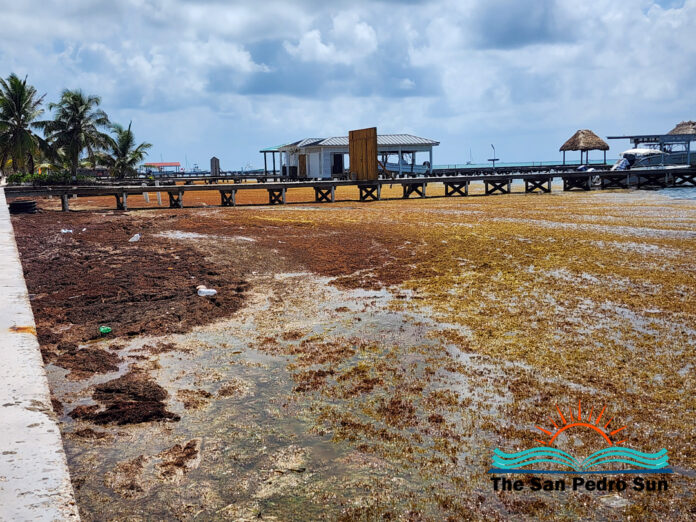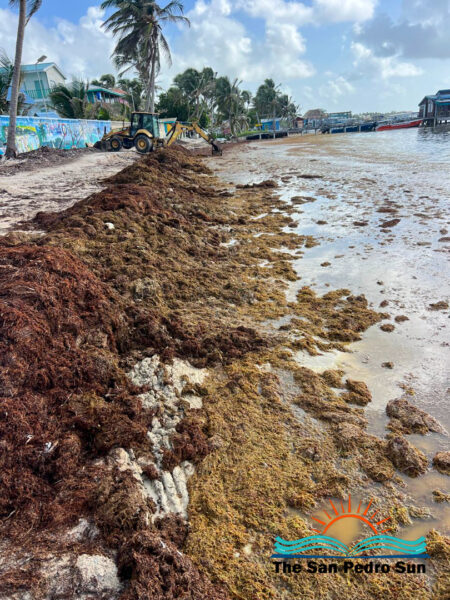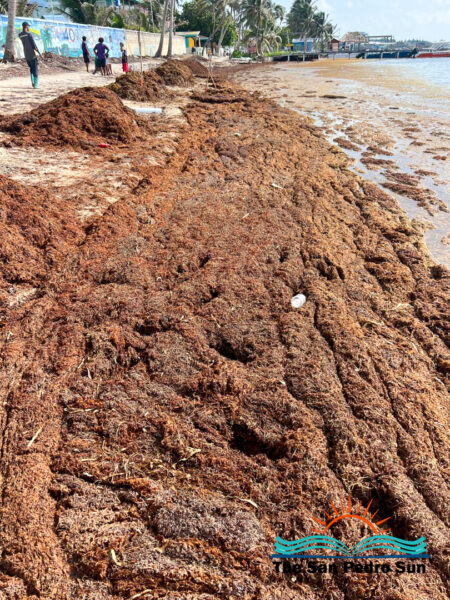In response to a 70% increase in sargassum seaweed washing ashore compared to the last significant event in 2022, the Government of Belize’s Cabinet has approved a comprehensive Sargassum Emergency Response Plan, announced on July 17th. This approval comes amid an escalating influx of sargassum that is severely impacting Belize’s coastal communities, tourism, and economy.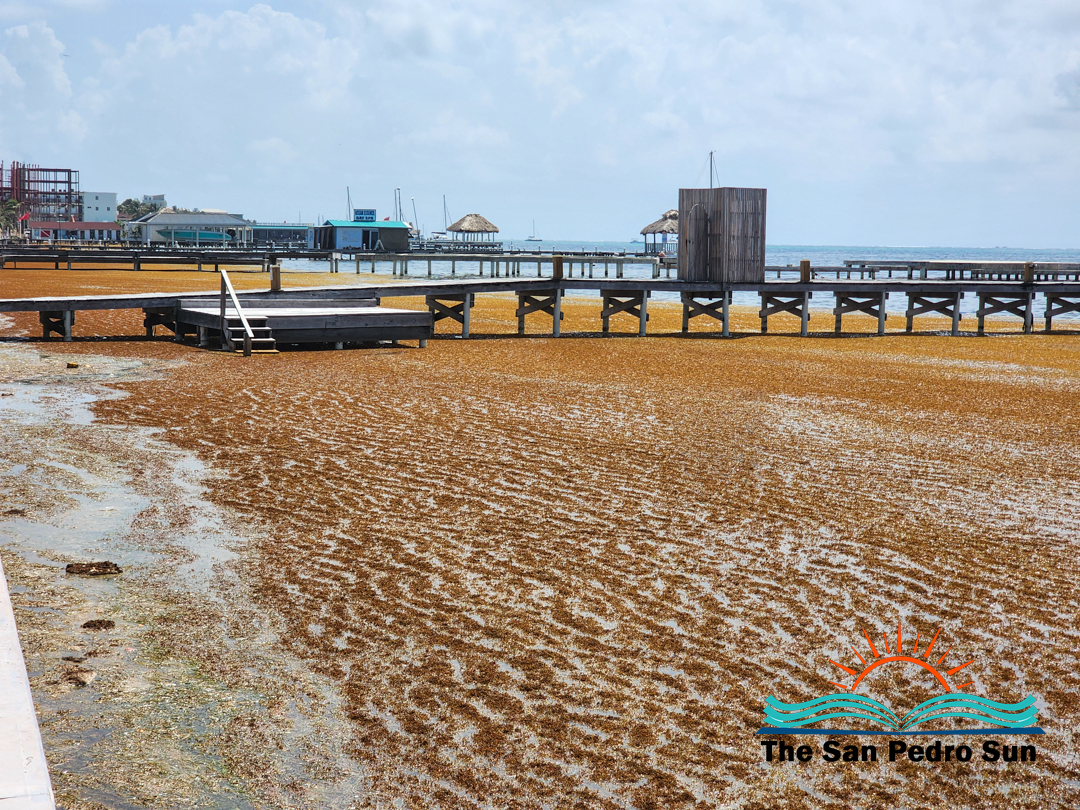
The plan, jointly developed by the Ministry of Tourism and the Ministry of Blue Economy and Marine Conservation, in collaboration with the Ministry of Youth, Sports & Diaspora Relations, aims to provide immediate relief through financial assistance to support cleanup operations in affected coastal towns, such as San Pedro. It allocates government funding and introduces incentives to facilitate the collection and transportation of sargassum to designated disposal sites, thereby reducing the environmental and health hazards caused by the seaweed’s foul odor and toxic gases.
Recognizing that a short-term response is insufficient, the Cabinet has also directed the Sargassum Task Force to develop medium to long-term strategies. These include the implementation of a robust monitoring and early warning system for sargassum drifts, ensuring faster and more coordinated responses in the future. The plan emphasizes enhanced collaboration among key ministries, local governments, and private sector stakeholders to mount an effective, unified defense against this persistent threat.
Sargassum accumulations not only obstruct beaches and produce strong odors but also deter visitors, severely affecting the tourism industry. Coastal municipalities such as San Pedro, Caye Caulker, Hopkins, Seine Bight, and Placencia have been prioritized for cleanup support, including the provision of equipment and operational resources as part of the emergency response.

The San Pedro Town Council has already reactivated its emergency response (“red code”) and increased labor for seaweed removal, with support from local businesses and authorities. However, despite the use of specialized harvesters, the sheer volume of sargassum remains overwhelming, underscoring the need for sustained, well-coordinated action at the national level.
The approval of the emergency plan signifies the government’s acknowledgment of the escalating sargassum crisis. The Government of Belize continues its efforts to protect the country’s coastal communities and vital tourism assets.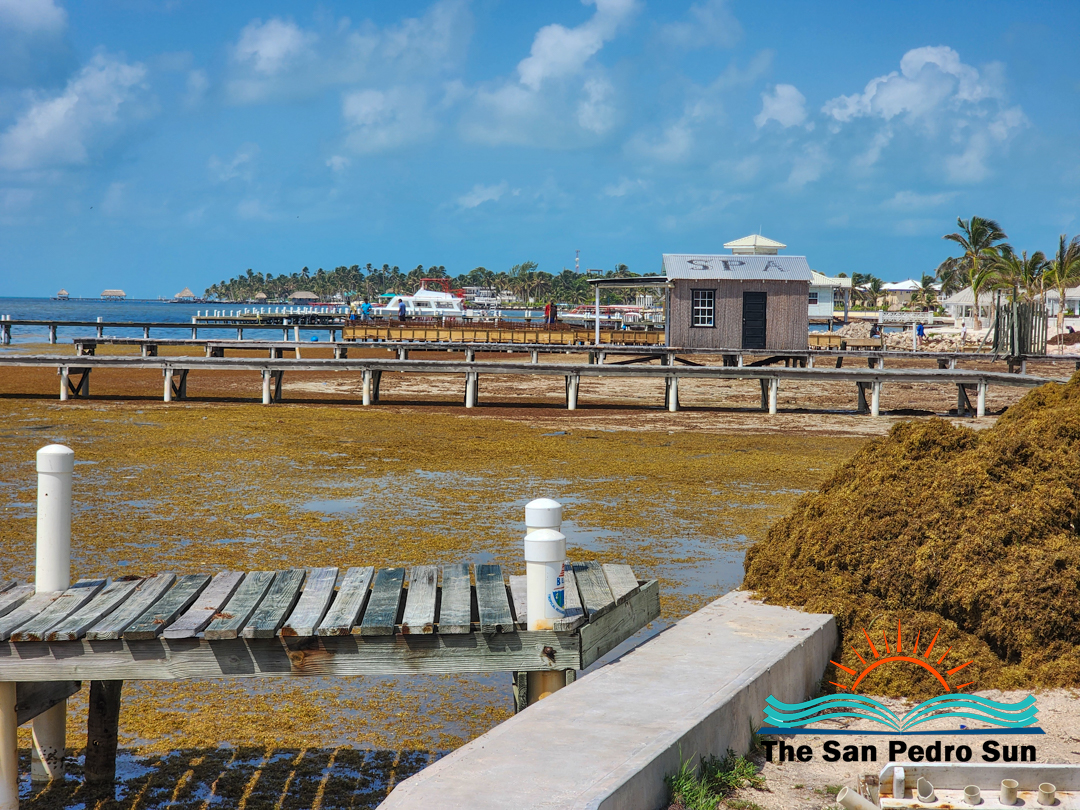
Satellite data and expert analyses are forecasting a continued surge in sargassum seaweed through August 2025. After reaching a record-breaking 37.5 million metric tons in May, the highest total since monitoring began in 2011, bloom intensity is expected to remain elevated, particularly across the western Caribbean Sea and the Gulf of Mexico. According to the University of South Florida’s Optical Oceanography Lab, much of that mass is likely to drift into the western Caribbean and the Gulf region this month, depending heavily on prevailing wind patterns and ocean currents. While total sargassum levels in the tropical Atlantic appear poised to taper slightly, suggesting a turning point around June, accumulations along Caribbean coastlines are projected to remain at historically high levels into August and early September.

